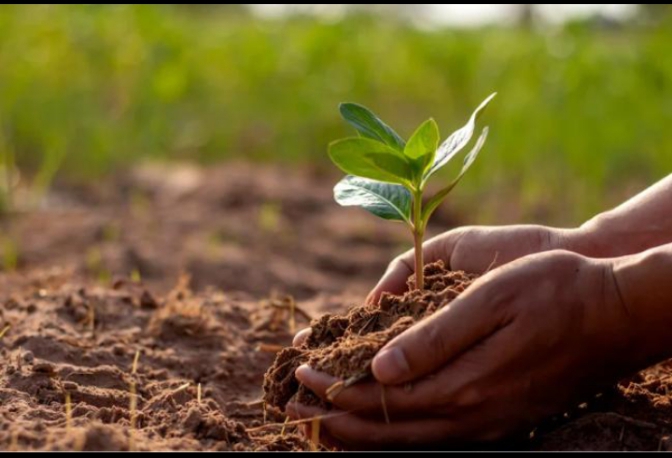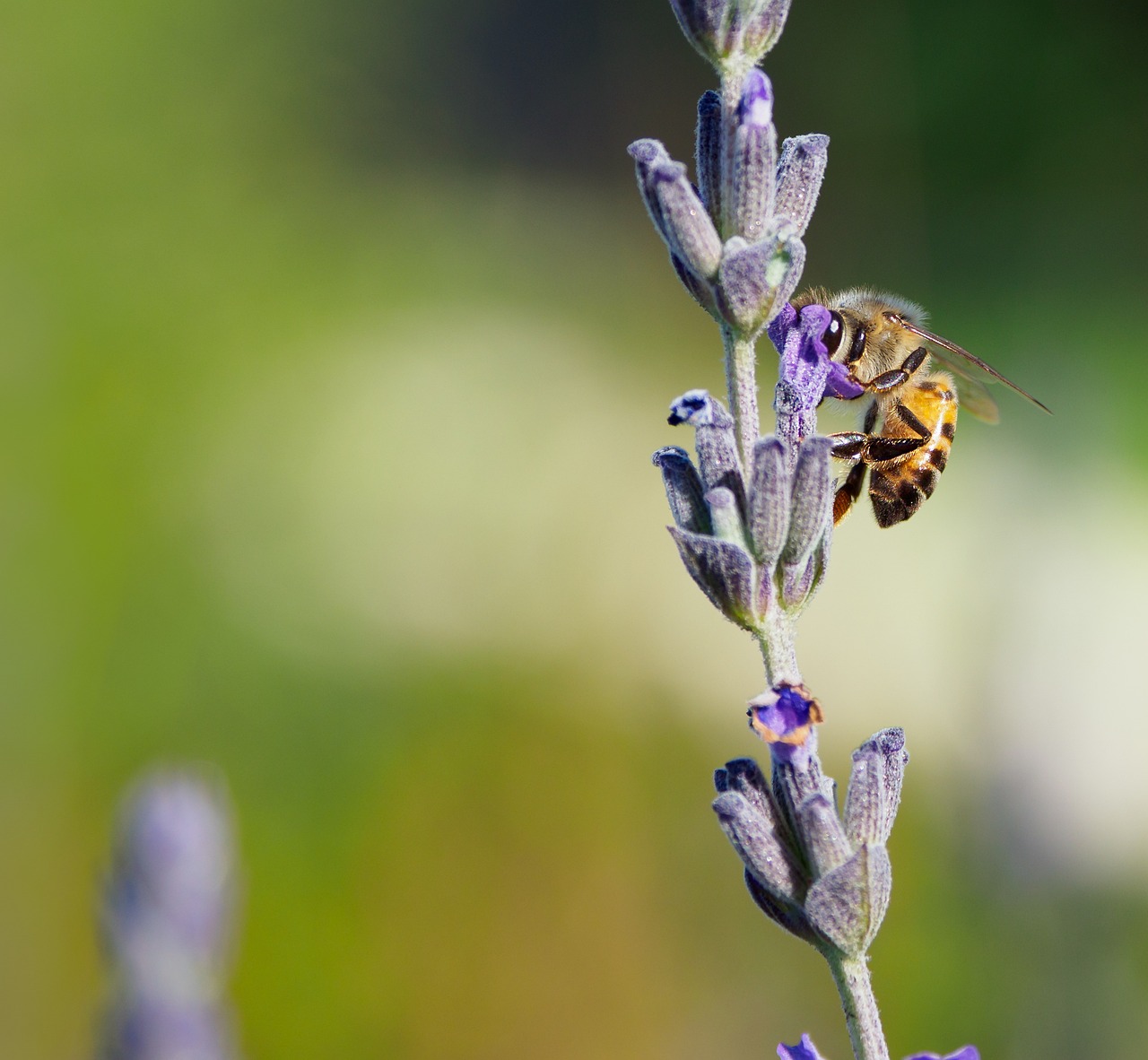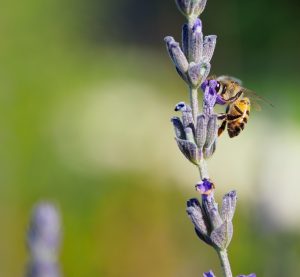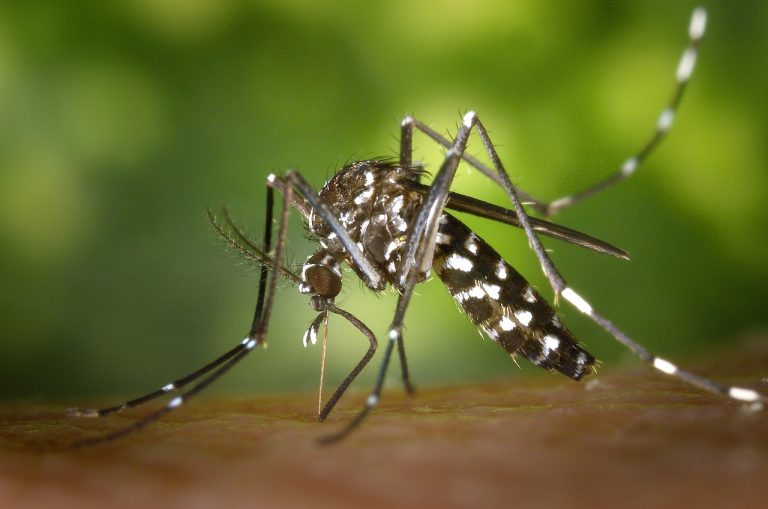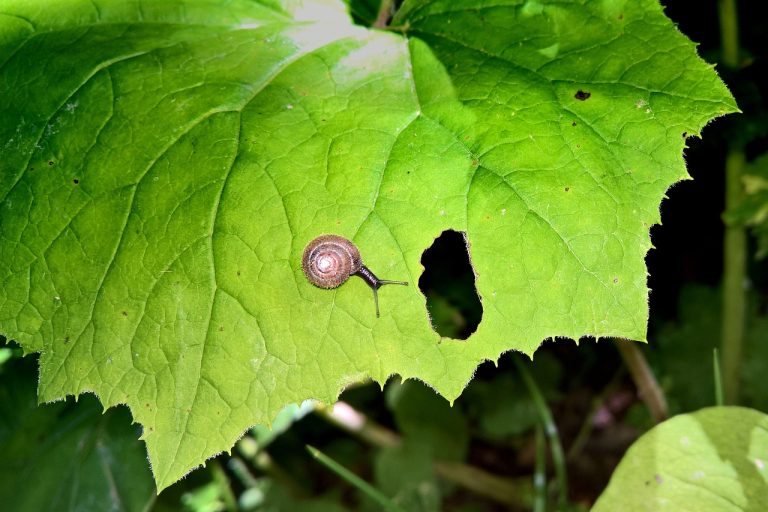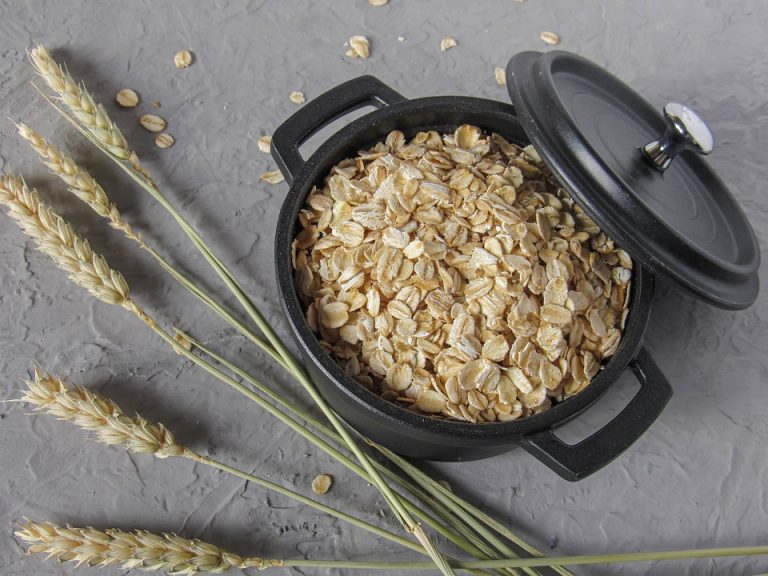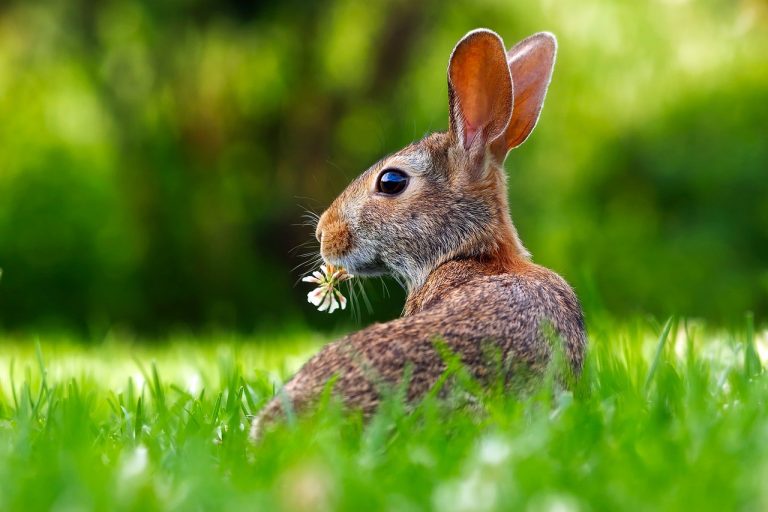IS LAVENDER GOOD FOR BEES (4 Amazing Facts)
Lavender, known for its vibrant purple flowers and distinctive scent, holds a special place in gardens and herbal remedies worldwide. Its popularity stems from not only its aesthetic appeal but also its myriad of uses, ranging from aromatherapy to culinary applications. Meanwhile, bees, as integral pollinators, play a crucial role in maintaining biodiversity and supporting food production.
IS LAVENDER GOOD FOR BEES?
Lavender, revered for its fragrant blooms and therapeutic properties, has often been celebrated for its allure to bees. This aromatic herb, belonging to the mint family, has captivated gardeners, environmentalists, and scientists alike. But the question remains: Is Lavender truly beneficial for bees?
LAVENDER: A BEE MAGNET
Lavender, a beloved plant renowned for its soothing aroma and diverse uses, holds a remarkable allure for one of nature’s most crucial creatures: bees. The intricate chemistry behind lavender’s irresistible pull on bees lies in its complex composition, particularly attributed to compounds such as linalool and linalyl acetate.
THE CHEMISTRY BEHIND LAVENDER’S ALLURE
At the heart of lavender’s enchantment is its chemical makeup. Linalool and linalyl acetate are pivotal compounds responsible for the rich and distinctive fragrance that defines lavender. These compounds emit floral scents that act as a beacon, drawing bees from far and wide.
UNDERSTANDING LAVENDER’S COMPOUNDS
Linalool, a key component in lavender essential oil, contributes significantly to its scent profile. This compound exudes a sweet, floral aroma that resonates with bees’ olfactory senses. Similarly, linalyl acetate, found abundantly in lavender, complements linalool, enhancing the fragrance that beckons bees.
THE SCENT: A BEE MAGNET
The olfactory allure of lavender, owing to these compounds, acts as an irresistible invitation to bees. The fragrance disperses through the air, serving as a natural magnet, pulling in bees from miles away. It’s akin to a floral symphony, orchestrated by lavender to entice these crucial pollinators.
LAVENDER’S ROLE IN BEE CONSERVATION
Beyond its aromatic appeal, lavender plays a pivotal role in supporting bee populations. As bees flock to these fragrant blooms for nectar and pollen, they contribute significantly to the pollination process, thereby aiding ecosystem balance and biodiversity.
CREATING BEE-FRIENDLY ENVIRONMENTS WITH LAVENDER
Gardening enthusiasts and conservationists alike can cultivate lavender strategically to attract and support bees. Planting lavender in gardens, alongside other bee-friendly flora, contributes to creating nurturing habitats for these vital insects.
BEYOND BEE ATTRACTION: LAVENDER’S VERSATILITY
While lavender’s allure to bees is fascinating, its significance extends beyond being a mere magnet for pollinators. This versatile plant offers an array of benefits, from its therapeutic properties in aromatherapy and skincare to its culinary uses, enriching lives beyond its role in bee attraction.
BENEFITS OF LAVENDER FOR BEES
Foraging behavior in bees is profoundly impacted by Lavender. The nectar and pollen offered by this aromatic plant play a pivotal role in sustaining bee populations, contributing significantly to their overall health and well-being.
The nutritional richness of Lavender provides indispensable sustenance for bees, assisting them in their daily tasks and throughout their lifecycle. Composed of various essential nutrients, including sugars, amino acids, and more, Lavender acts as a crucial nutritional resource for these vital pollinators.
Studies indicate that Lavender isn’t merely a food source but also aids in maintaining the sustainability of bee populations. Its presence influences the bee lifecycle, from supporting their foraging activities to enhancing the health of entire colonies.
Moreover, Lavender’s impact extends to the environment, influencing bee habitats positively. Its cultivation, when done mindfully, creates bee-friendly environments, contributing to the conservation of these essential pollinators.
Scientific research strongly supports Lavender’s role in bee welfare, with numerous studies highlighting its positive effects on bee behavior, health, and population sustenance.
Beekeepers have also begun integrating Lavender into their practices, recognizing its advantages in supporting bee colonies. This integration not only aids bees but also benefits beekeepers in managing healthier and more productive hives.
Beyond its role in bee sustenance, Lavender has diverse practical applications, including its use in aromatherapy, cosmetics, and culinary endeavors, amplifying its significance beyond the realm of bees.
However, challenges and considerations exist, such as potential drawbacks or ethical concerns associated with excessive usage. Finding a balance between leveraging Lavender’s benefits and ensuring its sustainable utilization becomes pivotal.
Looking ahead, there’s a promising future for leveraging Lavender for bee welfare, with ongoing innovations and potential advancements poised to further support these crucial pollinators.
CULTIVATION AND BEE CONSERVATION: LAVENDER’S ROLE IN PRESERVING VITAL BEE POPULATIONS
Bees play an indispensable role in maintaining ecological balance and biodiversity. However, the alarming decline in bee populations poses a significant threat to ecosystems worldwide. Encouragingly, the strategic cultivation of Lavender in gardens and agricultural spaces presents a viable solution to support and revive these declining bee populations.
UNDERSTANDING THE IMPORTANCE OF BEE CONSERVATION
Bees serve as nature’s pollinators, facilitating the reproduction of various plants, including food crops and wild flora. Their decline directly impacts agricultural productivity and ecosystem stability. Factors such as habitat loss, pesticide use, and climate change contribute to the decline in bee populations.
THE ROLE OF LAVENDER IN BEE CONSERVATION
Lavender, renowned for its fragrant blooms and medicinal properties, holds a special allure for bees. The unique characteristics of Lavender, such as its vibrant color and rich nectar content, make it highly attractive to these essential pollinators. By cultivating Lavender, individuals can create a haven for bees, offering them a sustainable food source essential for their survival.
STRATEGIC PLANTING FOR BEE-FRIENDLY GARDENS
Incorporating Lavender into gardens alongside other native bee-friendly plants is key to fostering a supportive ecosystem for bees. Companion planting methods that pair Lavender with compatible flora enhance the attractiveness of the garden to bees. Understanding which plants complement Lavender’s growth and benefits is crucial for maximizing its impact on bee populations.
CREATING A BEE-SUPPORTIVE ENVIRONMENT
Designing gardens with diverse flowering plants, providing adequate shelter, and minimizing pesticide use are integral steps toward creating a bee-friendly environment. The collective effort in establishing such spaces significantly contributes to the broader conservation of bee populations and the preservation of biodiversity.
LAVENDER CULTIVATION TIPS
Successful Lavender cultivation requires attention to specific environmental factors. Optimal soil conditions, adequate sunlight exposure, and proper maintenance techniques play a pivotal role in ensuring Lavender thrives and continuously attracts bees.
CASE STUDIES ON BEE-FRIENDLY SPACES
Numerous successful examples highlight the positive impact of Lavender cultivation on local bee populations. These case studies demonstrate how strategic planting and community involvement contribute to revitalizing bee habitats and populations.
COMMUNITY ENGAGEMENT IN BEE CONSERVATION
Empowering communities through education and awareness programs fosters a collective responsibility for bee conservation. Encouraging individuals to establish bee-friendly spaces in their surroundings amplifies the efforts towards revitalizing declining bee populations.
CHALLENGES AND CONTROVERSIES: LAVENDER’S IMPACT ON BEE HEALTH
Lavender, widely celebrated for its aromatic beauty and medicinal properties, stands as a symbol of tranquility and natural wellness. However, the relationship between Lavender and bee health has sparked significant debates within scientific circles. While Lavender is acknowledged for its positive effects on bees, concerns have emerged regarding the potential risks posed by pesticides used in its cultivation.
BENEFITS OF LAVENDER FOR BEES
Lavender has long been revered for its ability to attract bees, providing them with a rich source of nectar. Its vibrant blooms offer a haven for bees, aiding in their pollination efforts. This symbiotic relationship contributes significantly to the ecosystem, supporting biodiversity and crop production.
CONCERNS RAISED: PESTICIDES IN LAVENDER CULTIVATION
Despite its benefits, the use of pesticides in Lavender farming has raised red flags. The same chemicals that protect Lavender from pests might pose risks to bee health. The residue from these pesticides might find its way into the nectar, potentially impacting bee populations.
DEBATING THE BALANCE: BENEFITS VS. RISKS
Scientific discourse surrounds the balancing act between Lavender’s benefits and the potential threats it poses to bees. The scientific community grapples with evaluating the scale of benefits against the risks, fostering a nuanced understanding of this intricate relationship.
PROPOSED SOLUTIONS AND MITIGATION STRATEGIES
Efforts are underway to address this conundrum. Implementing sustainable agricultural practices and exploring pesticide-free cultivation methods emerge as potential solutions to mitigate risks while preserving Lavender’s positive impact on bees.
COMMUNITY INITIATIVES AND RESEARCH EFFORTS
Communities and researchers globally are collaborating to unravel the complexities surrounding Lavender and bee health. Studies and initiatives aim to uncover sustainable practices that promote coexistence between Lavender cultivation and bee conservation.
PUBLIC PERCEPTION AND AWARENESS
Fostering public awareness and dispelling misconceptions play a pivotal role in this debate. Educating individuals about the complexities of this issue encourages informed discussions and conscientious choices.
REGULATORY MEASURES AND POLICIES
Existing regulations must be revisited to safeguard bee populations. Implementing stringent guidelines and policies that promote bee-friendly practices in Lavender cultivation could be pivotal in ensuring environmental sustainability.
Frequently Asked Questions (FAQ) about “Is Lavender Good for Bees”
Is Lavender the only plant that attracts bees?
Lavender is among the many plants that attract bees due to its rich nectar and pollen, but there are several others like sunflowers, sage, and rosemary that also entice these pollinators.
Can Lavender planted in urban areas help bees?
Absolutely! Urban gardens and green spaces with Lavender can be crucial havens for bees, providing them with food sources amidst urbanization.
Does Lavender oil have the same effect on bees as fresh Lavender flowers?
While Lavender oil may contain some of the same chemical compounds, the effect on bees might vary compared to fresh flowers.
Are there different bee species attracted to Lavender?
Yes, various bee species are drawn to Lavender, contributing to its role in supporting diverse bee populations.
How can individuals contribute to bee conservation using Lavender?
Planting bee-friendly gardens with Lavender and avoiding pesticides can significantly contribute to supporting bee populations and conservation efforts.
Is all lavender attractive to bees?
Lavender varieties with high concentrations of linalool and linalyl acetate tend to be more appealing to bees.
Can lavender help in bee conservation efforts?
Yes, by planting lavender, individuals can create bee-friendly environments that support their populations.
How can I plant lavender to attract bees?
Choose sunny spots with well-drained soil and ensure adequate spacing between plants for optimal bee attraction.
Apart from bees, what other benefits does lavender offer?
Lavender has diverse uses, including in aromatherapy, skincare, and culinary applications.
Is lavender easy to grow?
Lavender generally thrives in well-drained soil and requires minimal maintenance, making it relatively easy to grow.
CONCLUSION
Lavender undeniably holds significant allure for bees, offering sustenance and support vital to their existence. Its role in fostering bee populations and contributing to ecosystems cannot be overlooked. To ensure a thriving environment for bees, promoting the cultivation of Lavender alongside conscientious, pesticide-free practices is paramount.
